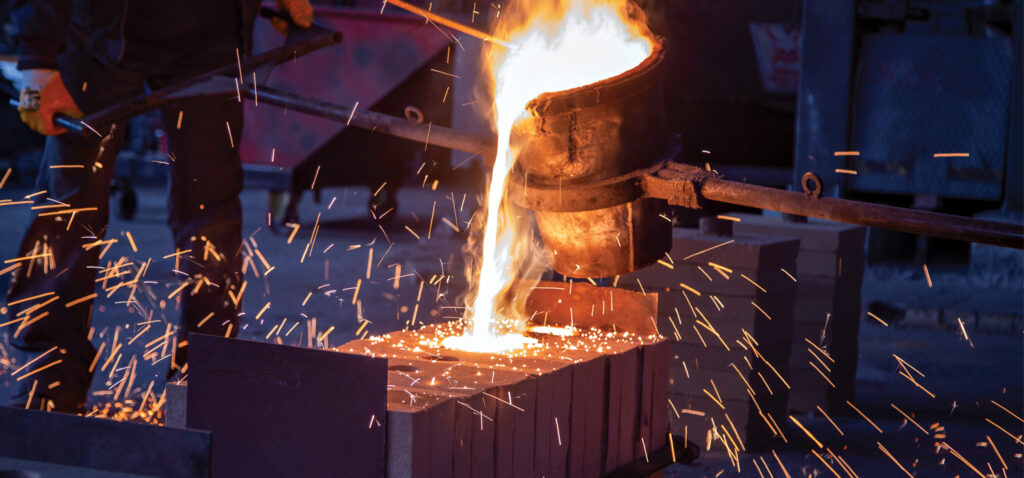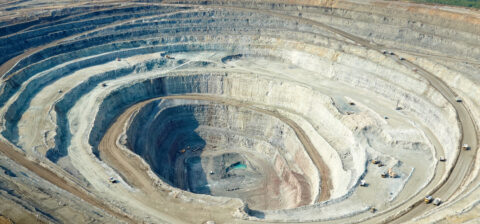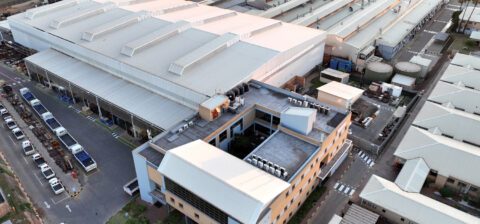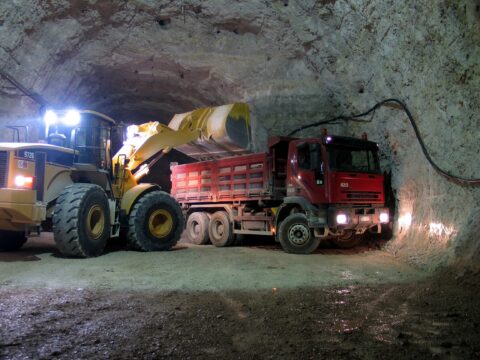SA Mining
The Top Mining Trends In 2023
By: Rodney Weidemann.
However, costs and productivity continue to raise concerns as inflation bites, and mines explore new ways to manage variability and unlock value. In addition, geopolitical uncertainty – most notably the war in Ukraine – and supply chain challenges will continue to demand leaders’ focus.
ESG is critical
The latest ranking of the top 10 mining and metals risks and opportunities reflects the competing priorities for miners in a fast-changing, volatile world. It is no surprise to learn that ESG remains the number one challenge – one that is broadening in scope and complexity, as pressure is increasing to improve reporting transparency.
According to Paul Mitchell, EY Global Mining & Metals leader, some of the greatest areas for ESG improvement are not new: improving diversity, equity and inclusion is still a major challenge, and mine closures and rehabilitation require a longer-term, more strategic view.
“However, ESG is evolving, and is thus requiring miners to consider different issues and broaden their capabilities to manage them effectively. For example, water stewardship and biodiversity are fast becoming urgent priorities amid a changing climate,” he says.
“It is clear that more rigorous reporting will become critical if companies are to meet growing stakeholder expectations, not to mention avoiding accusations of ‘greenwashing’. Miners that achieve this can get an edge on competitors in many ways – from accessing capital to securing a licence to operate and even attracting talent.”
PwC, in its SA Mine 2022 report, agrees that a global low-carbon energy agenda remains a key focus, adding that this is anticipated to result in increased demand for a number of commodities in the medium to long term. Global constraints in supply of these commodities will mean increased prices and a need for investment in supply.
When looking at a “just transition” away from fossil fuels, PwC says, the pace of this is likely to be limited by the availability of resources needed for the transition. Here, understanding the supply constraints will be key to mapping a realistic transition for the future.
Geopolitical issues
Another trend that is higher up the rankings in 2023 is that of geopolitics, which is being driven by global conflict and resource nationalism. This rising trend requires miners to develop a deeper understanding of the impact of geopolitics on strategy.
The South African Mining Industry Trends Report 2022 notes that the invasion of the Ukraine by Russia at the end of February 2022 led to unprecedented impacts on energy and industrial commodities markets.
According to the report, the price of energy commodities and precious metals, which started to soften towards the end of 2021, increased to near-historic highs by March 2022. Volatility in commodity prices hold risk for the economy and the mining sector, while higher petroleum prices fuel inflation.
EY, in turn, suggests that with many geopolitical factors beyond the control of mining and metals companies, this is a particularly difficult risk to mitigate. The greatest opportunities probably lie in forging closer ties with government, increasing collaboration with stakeholders, including trade and sector groups, and exploring the potential of government incentives and co-investments.
A changing climate
EY’s Mitchell points out that while more miners are setting net-zero ambitions, pathways to achieve these are sometimes unclear. This is because an accelerated decarbonisation agenda, and sharper focus on reporting emissions, is creating a new urgency around better mitigating climate change risk.
“For example, more action needs to be taken to minimise the physical risks of climate change, such as wildfires and flooding, which may threaten operations. Companies that explore a mix of options – including carbon offsets, partnering up and down the value chain and collaborating with suppliers and vendors to monitor Scope 3 emissions – can build a proactive strategy to address a risk that is likely to become even more complex.”
The mining sector is a major contributor to greenhouse gas emissions, says Andries Rossouw, PwC’s Africa Energy, Utilities and Resources leader.
“In 2021, up to 81.4% of South Africa’s electricity was generated from coal, and considering that up to 60% of the energy used in the mining sector comes from electricity, issues of decarbonising as well as sustainable and reliable power supply are directly connected,” he says.
“Addressing these dual challenges will require the mining sector to make major investments in alternative and renewable energy sources and energy planning.”
The global energy transition won’t be smooth, he adds, as was reflected in the record coal prices experienced for the year. As a coal export producer, it is essential for South Africa to maximise the value obtained from its coal, through supporting global energy supply stability in these times of energy volatility.
Productivity and costs
EY further suggests that soaring inflation and talent costs are significantly increasing mining expenses, squeezing productivity and delaying expansion plans.
With costs likely to remain high, Mitchell points out that more innovative approaches to managing variability, including improved modelling and digital twins, should unlock genuine productivity gains.
“Managing costs needs to be done with an eye on long-term value, as well as short-term gains. Sustainable cost reduction measures include, for example, switching to renewable energy, encouraging innovation to reduce costs in the longer term, and creating strategic joint ventures to optimise economies of scale.”
Additionally, the Mining Industry Trends Report indicates several reasons for the recent decline. These include the gold industry experiencing one of its most protracted strikes into May 2022; platinum mines rebuilding furnaces and having operational difficulties; and coal mines being affected by higher-than-expected rainfall and electricity cuts.
Industry players are hopeful that the situation can be turned around, says the report, depending on commodity demand and prices holding up, as well as the creation of a conducive policy environment and the elimination of physical infrastructure constraints.
Meanwhile, PwC indicates that the industry’s financial performance exceeded expectations on most fronts, as global supply chains jostled to find their way back to pre-pandemic levels. This resulted in a growing demand for commodities in the sector, which saw record rand prices for the platinum group metals basket, iron ore, and coal. Most other South African commodity prices remained at relatively high rand levels.
Supply chain challenges
On the subject of the supply chain, EY notes that the recent disruptions have created new urgency to accelerate supply chain transformation.
“Supply chain disruption is new to the ranking, amid recent pressures, but it’s an issue mining and metals companies have long grappled with. Now organisations are intensifying efforts to transform supply chains, to better weather current volatility and find new opportunities to boost efficiency, resiliency and transparency,” says Mitchell.
“Miners are considering more innovative, sophisticated approaches to mitigating supply chain risk, including through stronger relationships with suppliers and collaborative contracting. With the pandemic exposing weaknesses in the ‘just-in-time’ model, we expect to see a mix of ‘just-in-case’ and ‘just-in-time’ supply strategies as miners find a way to balance supply chain resilience with costs.”
Capital allocation and workforce building
Changing demand and investor expectations are also shifting capital allocation strategies, suggests EY.
Miners are maintaining their focus on capital discipline, but are also exploring how to invest in growth and transformation. The energy transition is shifting demand, and companies are responding through more investment in “future-facing” commodities, such as copper and lithium, while also divesting coal assets.
Such decisions are not only motivated by a desire to adapt to an evolving market, but also to meet investors’ expectations around ESG performance. Organisations’ access to capital is increasingly linked to their ability to show how they create value beyond the bottom line.
From the perspective of the workforce, the company notes that building a purposeful brand and placing a greater focus on reskilling can help overcome talent shortages.
“Mining and metals companies face their greatest ever talent shortage following a massive wave of retirements and resignations. Replacing these workers and finding talent with critical skills will require a radical rethink of the sector’s approach to attracting, retaining and nurturing talent. With younger workers deterred by mining’s image, companies must double down on efforts to build a purposeful brand that aligns with today’s values,” says Mitchell.
The EY survey found that mining leaders recognised the need to reskill and upskill workers, but few are embracing this opportunity. A greater focus on training existing workers and sector newcomers in different skills can fill talent gaps and build a more flexible, agile workforce.
Mitchell says that with demand for certain commodities set to increase and sustainability becoming a bigger focus, now is the time for organisations to rethink business models.
“We see miners analysing where optimal value can be found, then designing their business models to capture this. Whether companies decide to reshape models to rationalise, grow or transform – or consider a strategic blend of all three – those that act now to future-proof their business will best withstand disruption, navigate changing commercial relationships and ultimately win competitive advantage.”
Digital transformation and innovation
Marc Poualion, Global Industry Marketing head, Metals and Mining at Aspen Technology, explains that mining has traditionally been known as a laggard in terms of technological adoption.
“Boston Consulting Group estimates that the mining industry is between 30% to 40% less technologically mature than comparable industries. Therefore, 2023 presents a substantial opportunity to generate value, by adopting technology that has been proven in other industrial sectors,” he says.
“Battery metals and rare earths are in boom markets, as developed nations are removing hydrocarbon-powered vehicles from production and sale, with many governments worldwide targeting zero sales of new hydrocarbon-powered vehicles by 2035. Mines need to tap into technology that allows more efficient mining with lesser impact on the environment.”
The need for electric vehicles grows in tandem with decarbonisation, population growth, and the inevitable replacement of gasoline and diesel-fuelled vehicles. These trends are reflected in the price booms created for lithium, copper, nickel, manganese and cobalt, among others, notes Poualion. This unabated demand will pressure the mining industry to pursue digitalisation and extract existing deposits as efficiently as possible.
“Major drivers to catalyse the adoption of technology includes the need to manage complexity in mining, to be more productive, and to stay ahead of the competition. After all, not being at the cutting edge of the technology available can position mining companies at existential risk. Therefore technology is mandatory, as it underwrites the future for mines, especially the ones mining lower-grade resources.”
Many organisations seek holistic technology strategies. But given the vast number of processes, stakeholders and commodities within the sector, it’s difficult for organisations to not only know where to start, but what will present the most immediate, impactful and measurable effects on productivity, profitability and sustainability.
A pragmatic and effective approach
It is for this reason, he continues, that a bite-sized, targeted deployment strategy is the most pragmatic and effective approach. Budgets, time and expertise to support any solutions are limited, so priorities need to be made clear.
“Risk also presents a very real factor that must be considered by leadership teams attempting to implement technological solutions. Adoption of a given technology must be successful – or the time, money and potentially the careers linked to those endeavours could be placed at risk if things don’t work out.
“No one wants to be responsible for the failed implementation of a given technological solution, as this can have far-reaching ramifications for the individual, as well as the operation and the company at large,” says Poualion.
A key technological innovation in mining and resources right now is machine learning, which is transforming the industry. Solutions empowered by algorithms that can learn from past behaviour and adapt to changing conditions can positively impact many operations.
With mining companies developing digital strategies to maintain their competitive edge and control increasing costs, many operators are looking to adopt and implement artificial intelligence technologies.
“With the Fourth Industrial Revolution in full swing, the mining industry will see greater access to information that is handled by machine-learning algorithms to produce insights that have never been possible before. Insights derived from real-time access to all forms of information as each of the processes and solutions within the mining value chain become more and more integrated, allowing for immediately actionable information and the introduction of a truly proactive approach to adapting to changing conditions on the ground.”
EY’s Mitchell points out that digital innovation has dropped down the ranking as miners build confidence and capabilities in this area.
“Companies are reaping significant cost, productivity and safety gains from the implementation of new technologies, including drones, remote operating centres and autonomous trucks.
“However, despite encouraging progress across the sector, we still see a largely siloed approach to digital and innovation. A more integrated strategy across the value chain in 2023 will increase return on investment and help miners better tackle their most complex challenges, including ESG and productivity,” he says.





